Here Are Some Performance Cars You Probably Forgot Existed
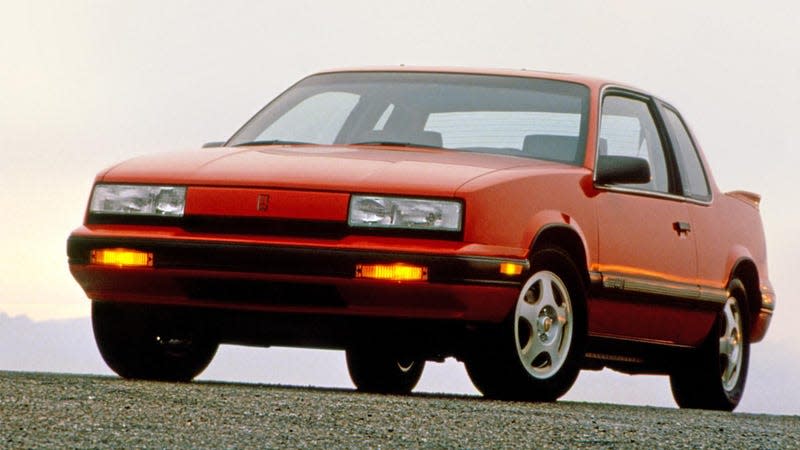
Over the years, the term “performance car” has had different meanings. While some of these cars may have been cool for their time, many have now been lost to history. But this being Jalopnik, we don’t easily forget cars. Some of these models can be looked back on for nostalgic reasons, even if the performance of the car itself is a joke by modern standards.
So take a trip with us down memory lane. Here are some performance cars you probably forgot existed.
Read more
X CEO Abandons WSJ Tech Conference Following Disastrous Appearance at Code
Legend Of Zelda: Tears Of The Kingdom Director Spills On MIA Sheikah Technology
Amber Heard's Aquaman 2 Drama Gets New Ripples With Elon Musk, Jason Momoa, and More
4 Summer Movies You Probably Missed Just Got New Home Release Dates
By the early 1980s, the Dodge Charger was a shadow of it’s former self. No longer the huge tire shredding muscle car it was in the late 1960s and early 1970s, it was now a compact unibody front wheel drive lift-back powered by four cylinder engines.
At the request of Lee Iacocca, Carroll Shelby begin working with Dodge in the 1980s. He came on as a performance consultant and helped to develop many of the hot models of that time. Among them was the Shelby Charger. Aside from more aggressive styling, power was enhanced. A turbocharger with higher boost was thrown onto Chrysler’s 2.2-liter I4 for 146 tire shredding horsepower. It was decently quick for the time; Motor Week managed to get a 7.9 second zero to 60 mph time out of an ‘85 model.
Mitsubishi Diamante VR-X
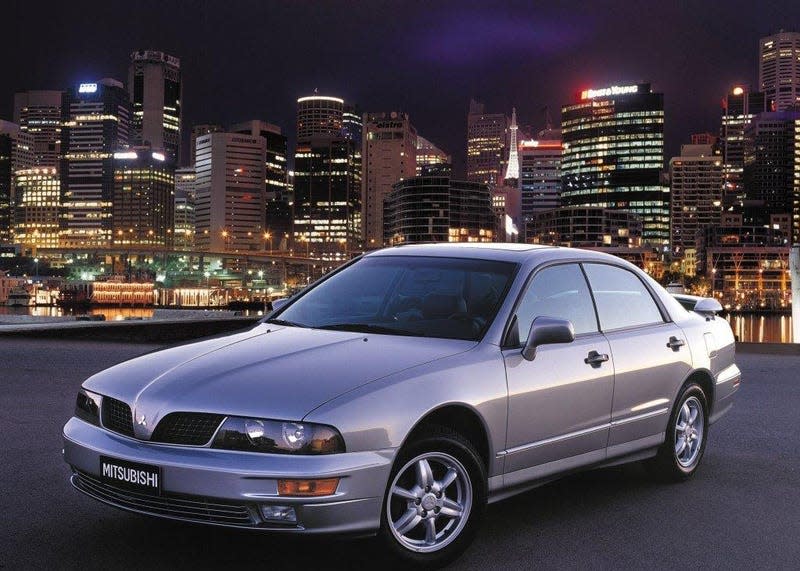
You probably don’t even remember that Mitsubishi used to make a “luxury” sedan, much less a performance version of it. The U.S. got two generations of the Diamante. Toward the end of the models run here in the U.S. Mitsubishi introduced a performance variant from Australia to U.S. buyers.
From 2002-2004, the Diamante VR-X carried the performance torch for the model. Aside from styling enhancements like 16-inch Magna Sport alloy wheels and a full body kit with rear spolier, the VR-X had small performance enhancements. Power came from a 210 hp 3.5-liter V6; that was five more hp than the standard engine, but nine less than the Australian version. The VR-X also had a sporty suspension, two tone leather seating and white sport gauges.
Oldsmobile LSS
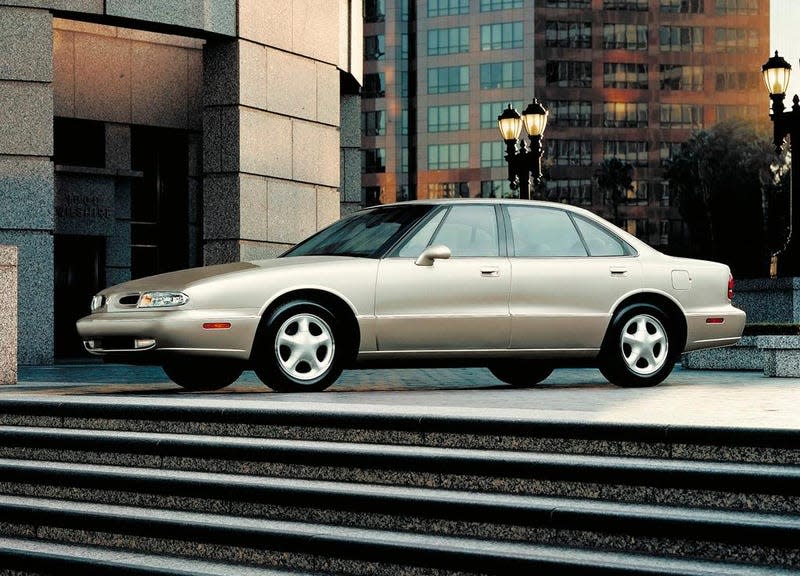
By the early 1990s, Oldsmobile’s lineup was for the older crowd. Cars like the 88 Royale Brougham, Custom Cruiser wagon and 98 Regency Elite attracted grandparents from all over. So Olds executives came up with a plan. To win over younger, male buyers who were into European sport sedans, the brand came up with the LSS.
LSS stood for Luxury Sport Sedan. It was essentially a performance variant of the 88. Originally avilable as a package on the 88, it eventually became its own separate model. Styling was distinctively different from regular 88s mainly in body trim and it’s unique five spoke 16-inch wheels. Performance changes included a supercharged version of GMs 3800 V6 and a performance tuned suspension. Oldsmobile even went so far as adding a floor shifter to the LSS, you know, because old people tend to like bench seats.
Mercury Topaz GS
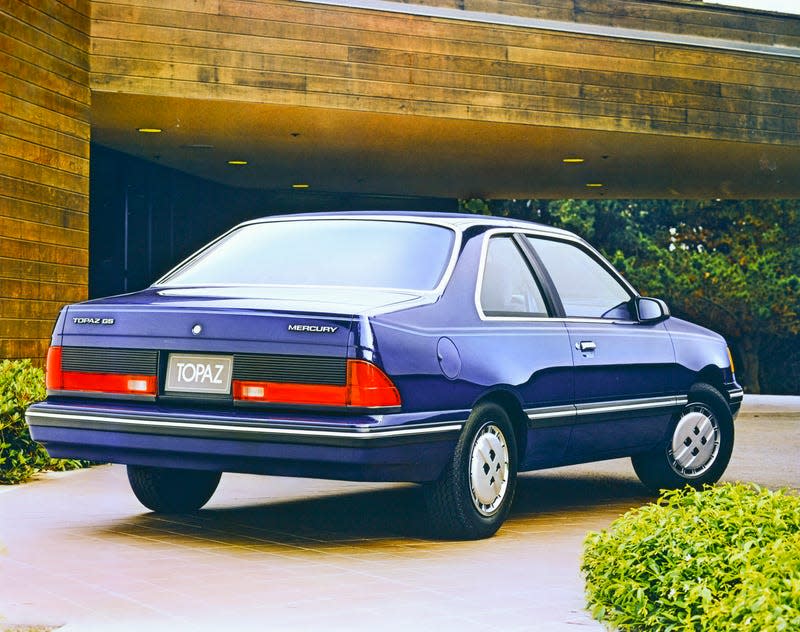
While the Mercury Topaz and its Ford Tempo cousin are forgettable small cars from the 1980s now, they were a big deal back in the day as Ford tried to take on the likes of Honda and Toyota. By the mid 1980s though Ford had some interesting market research on their hands. It showed buyers wanted a car with more power and performance handling, but not at the expense of fuel economy or a rough ride. That’s how the Mercury Topaz GS was born.
Aside from slightly sportier styling, it’s got sportier suspension tuning, wider tires and most importantly, a high output version of the standard Topaz’s 2.3 I4 with 101 hp. That was 12 more than the standard car and good for a zero to 60 mph time of 12.6 seconds. Sheesh.
Ford LTD LX
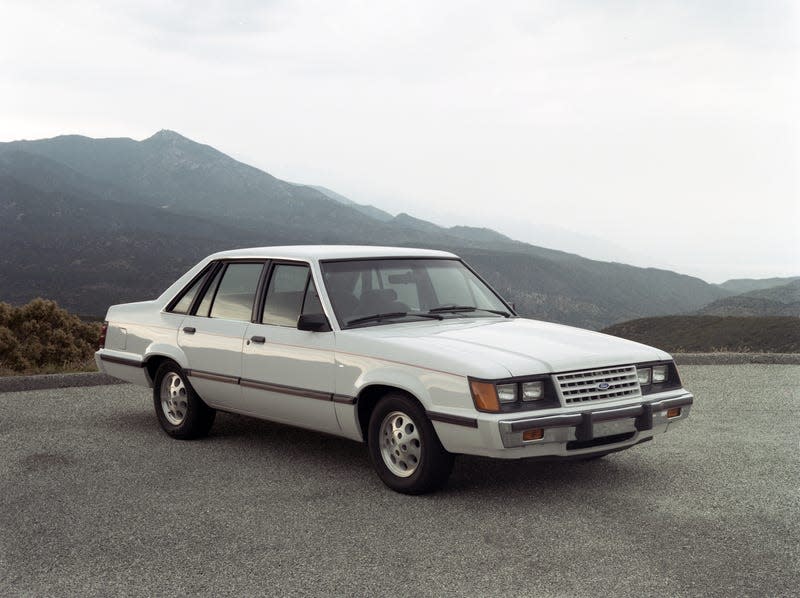
On paper, the Ford LTD LX is the stuff dreams are made of and wouldn’t look out of place today. Its premise was simple: take a basic family sedan and throw a big engine up front. The standard LTD was forgettable, a typical big, floaty barge. The LX raised the performance bar a bit.
Aside from slightly different styling, like black trim and a red pinstripe that ran the length of the car, most of the changes were underneath. The LTD LX got front and rear sway bars, a traction lock differential, bigger front disc brakes, Goodyear Eagle GT tires and most importantly, a high output version of the 5.0-liter V8. Output was 165 hp and 240 lb-ft of torque. Ford says just over 5,200 were ever made so they’re relatively rare. Even rarer is the Mercury version called Marquis LTS. It was only available in Canada for 1985 and only 134 were ever made.
Toyota Camry SE
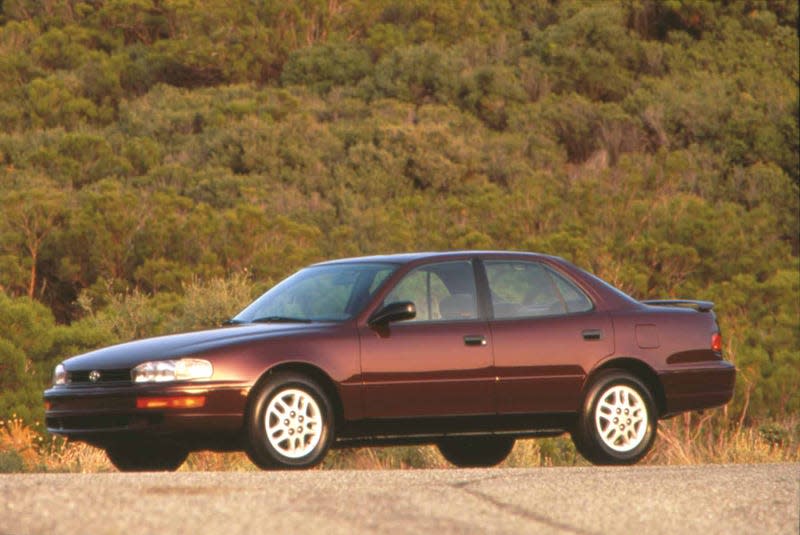
The Toyota Camry SE is a trim that’s still around today. While the XSE and TRD trims of the Camry currently carry the sporty torch for the model, back in the day the SE was the Camry to get for the driving enthusiast —if such a person existed at the time.
Sporty changes to the Camry SE included blacked out trim, five spoke alloy wheels and a rather low profile rear spolier on the trunklid. The only engine option for the SE was Toyota’s 3.0-liter V6 with 185 hp and 195 lb-ft of torque. With the standard five-speed manual transmission — the four-speed auto was an option — the Camry SE was laying down zero to 60 mph times of 7.2 seconds in the early 1990s. Not bad.
Mercury Tracer LTS
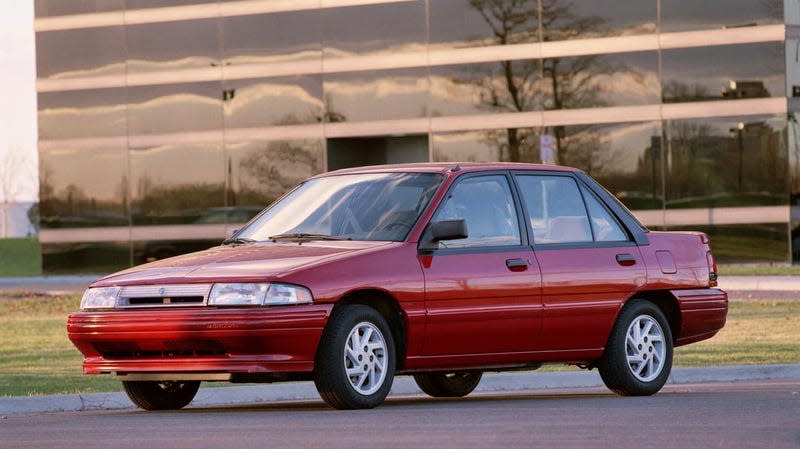
Ford’s ownership/partnership with Mazda produced a few interesting cars over the years like the Mazda MX-6 related Ford Probe and the first and unfortunate second generation of the Mazda 6. Another one of those interesting products was the Mazda 323/Protégé based Mercury Tracer LTS.
The base Tracer was a nondescript economy car, something cheap you bought without giving much thought to it. The LTS looked to bring in driving enthusiasts and younger buyers to Lincoln/Mercury showrooms. Exterior changes included a deep chin spoiler on the front facia, red accent strip, a small rear spoiler, and 14-inch alloy wheels. Power for the Tracer LTS was also Mazda based. The LTS received a 16 valve 1.8-liter I4 with 127 hp with a five-speed manual or a four-speed auto.
Dodge Neon R/T
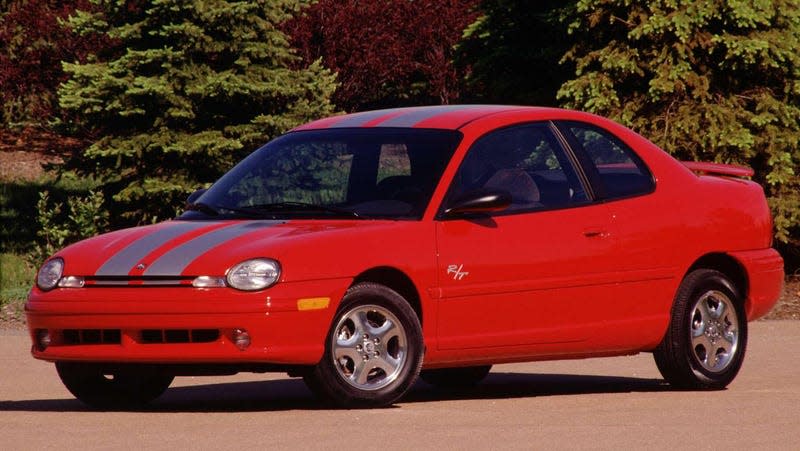
We sure do remember the Dodge Neon SRT-4, even the Caliber SRT-4 often. Not acknowledged enough is the SRT-4's forbearer and little brother the Neon R/T.
The Neon R/T made its debut for the 1998 model year and essentially took the goodies from the track ready Neon ACR and put them in a more street friendly package. Aside from the racing stripes, “R/T” badges, and rear spoiler, the R/T had a higher final drive ratio on its five-speed manual resulting in a 130 mph top speed, stiffer coil springs and a 2.0-liter I4 with 150 hp and 133 lb-ft of torque.
Saab 9-3 Viggen
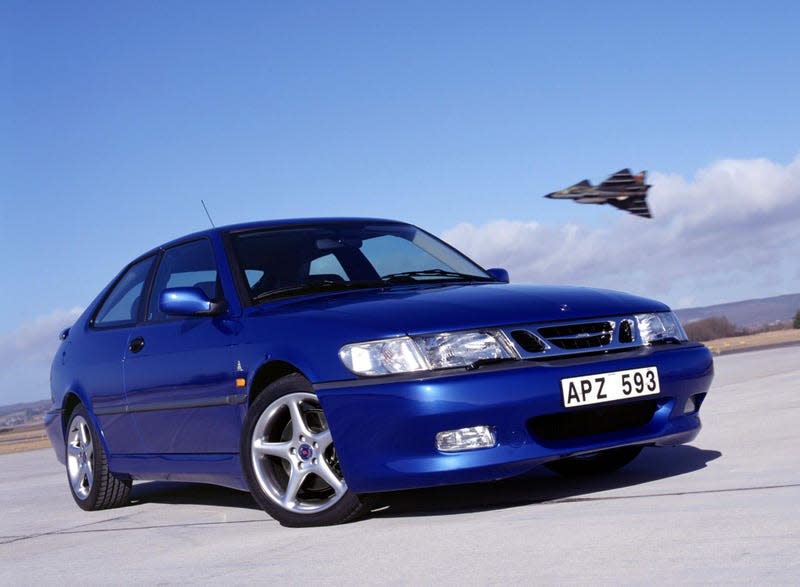
Saab made very interesting cars. One of the most interesting and highest performing model they ever made was the 9-3 Viggen, with a name pulled from the company’s 37 Viggen fighter jet.
Viggen means thunderbolt in English, and the 9-3 Viggen had the power and performance to back it up. Saab’s Special Vehicle Operations took the 2.3-liter I4 from the 9-5 and threw on a Mitsubishi turbocharger. The result was 225 hp and 252 lb-ft of torque. The engine had so much torque, to limit torque steer, a computer controlled the engine’s torque output in first and second gear: first gear had 184 lb-ft and second had 243 lb-ft. A five-speed manual was the only transmission available. Only 4,600 were ever made.
The Dodge 5.9 R/T Models
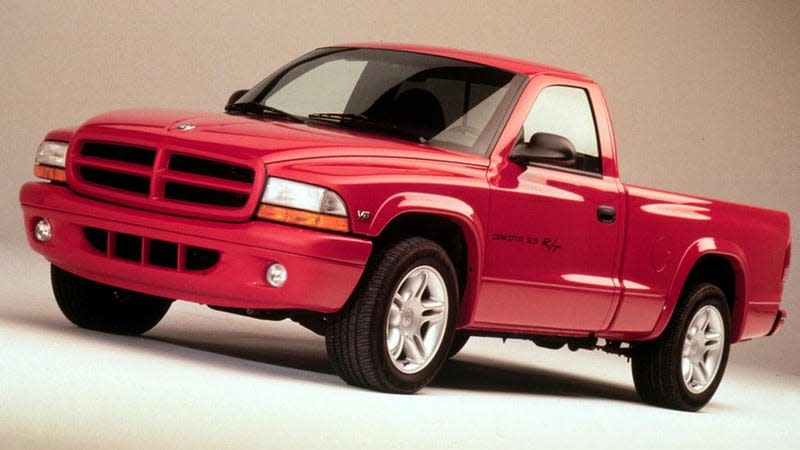
While Jeep was offering up off and on and off road performance with the Grand Cherokee 5.9, Dodge was offering the same setup in two distinct flavors.
Buyers could choose the 5.9 R/T trim on the Durango SUV which got you all wheel drive or the one you really wanted, the Dakota 5.9 R/T. Only available with rear wheel drive, you got the 250 hp 5.9-liter Magnum V8, four-speed automatic, limited slip differential, upgraded brakes, performance exhaust, and performance tuned suspension with a one-inch lower ride height. Better yet, the Dakota 5.9 R/T could be had in every configuration execpt for the Quad Cab model.
More from Jalopnik
‘Aquaman 2’ Director, Jason Momoa Allegedly Blamed Amber Heard for Movie’s Struggles
Popular Fantasy MMO Ditches Battle Pass After Players Revolt
Uncut Gems' producers weren't thrilled that Julia Fox was Josh Safdie's muse
Remember The Smiling Cop Who Beat The Black Vet? Well... The DOJ Remembers Him Too
Sign up for Jalopnik's Newsletter. For the latest news, Facebook, Twitter and Instagram.

 Yahoo Autos
Yahoo Autos 